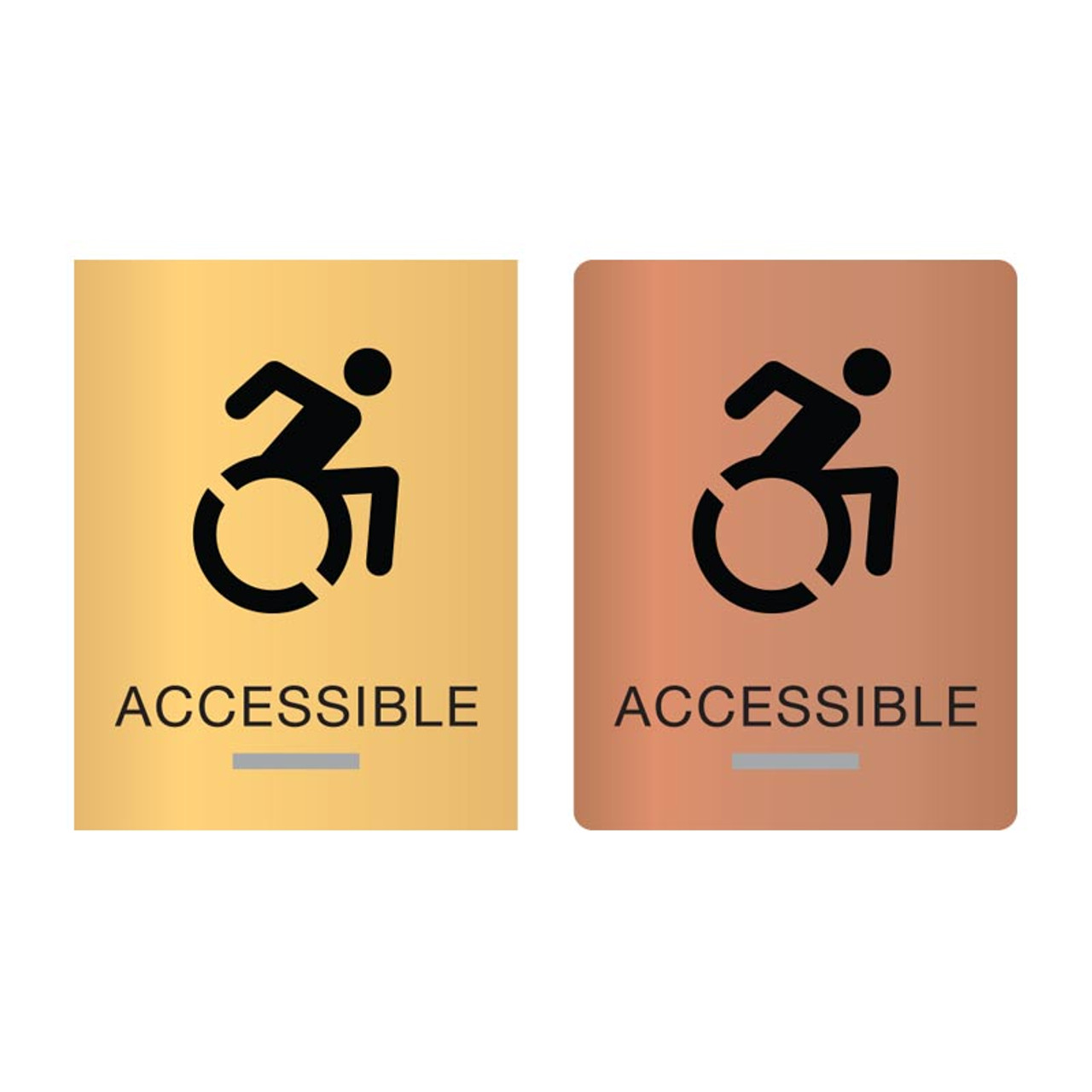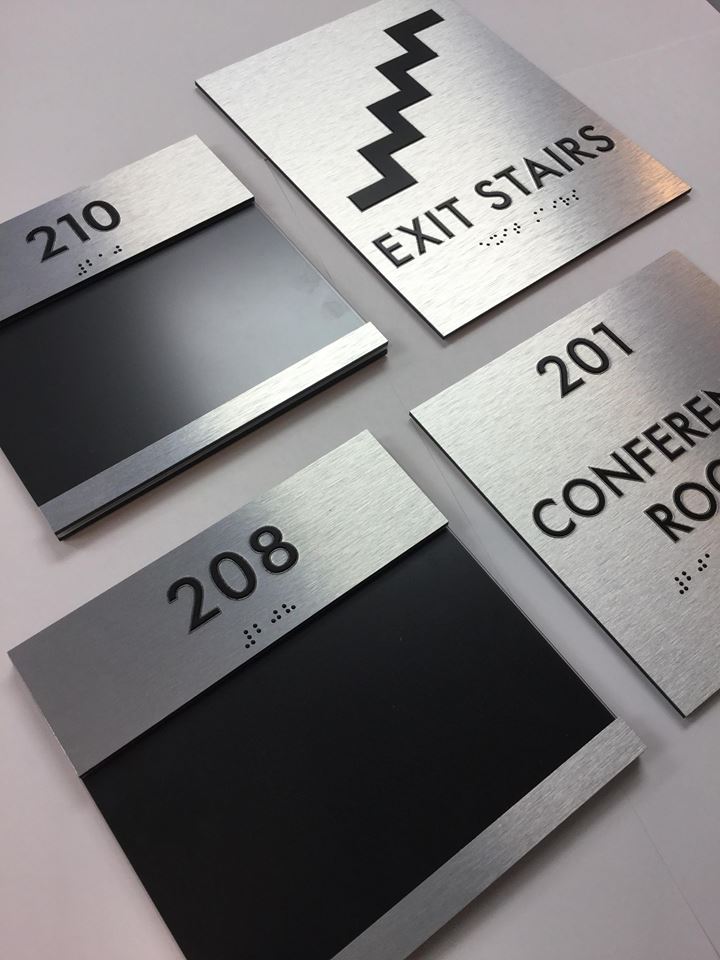The Effect of ADA Signs on Neighborhood Ease Of Access
The Effect of ADA Signs on Neighborhood Ease Of Access
Blog Article
Discovering the Key Features of ADA Signs for Enhanced Ease Of Access
In the realm of access, ADA signs offer as silent yet powerful allies, making certain that areas are comprehensive and navigable for people with handicaps. By integrating Braille and responsive aspects, these indicators damage barriers for the aesthetically impaired, while high-contrast color systems and legible typefaces cater to diverse aesthetic demands.
Significance of ADA Compliance
Making certain conformity with the Americans with Disabilities Act (ADA) is critical for promoting inclusivity and equal accessibility in public spaces and work environments. The ADA, passed in 1990, mandates that all public centers, companies, and transportation services fit people with disabilities, ensuring they take pleasure in the exact same legal rights and chances as others. Conformity with ADA requirements not only fulfills legal commitments however additionally boosts a company's credibility by showing its commitment to variety and inclusivity.
One of the vital facets of ADA conformity is the application of available signage. ADA signs are designed to make certain that people with disabilities can easily navigate through buildings and spaces.
In addition, adhering to ADA guidelines can alleviate the danger of legal consequences and possible penalties. Organizations that stop working to adhere to ADA standards may face legal actions or charges, which can be both economically burdensome and destructive to their public photo. Hence, ADA compliance is indispensable to promoting a fair setting for everyone.
Braille and Tactile Elements
The unification of Braille and tactile aspects into ADA signage symbolizes the concepts of ease of access and inclusivity. These attributes are vital for individuals that are blind or aesthetically impaired, allowing them to navigate public areas with greater self-reliance and self-confidence. Braille, a tactile writing system, is essential in supplying created information in a format that can be quickly regarded with touch. It is commonly placed underneath the equivalent text on signage to make sure that people can access the information without visual assistance.
Responsive aspects prolong beyond Braille and include raised icons and personalities. These components are made to be noticeable by touch, permitting individuals to identify room numbers, toilets, departures, and other crucial areas. The ADA sets certain guidelines regarding the dimension, spacing, and positioning of these tactile elements to enhance readability and make sure consistency across various environments.

High-Contrast Color Pattern
High-contrast color design play a crucial function in enhancing the presence and readability of ADA signage for people with visual problems. These plans are vital as they maximize the difference in light reflectance between text and history, making sure that signs are conveniently noticeable, even from a range. The Americans with Disabilities Act (ADA) mandates making use of details color contrasts to suit those with restricted vision, making it an essential facet of conformity.
The efficiency of high-contrast colors depends on their ability to attract attention in various illumination conditions, consisting of dimly lit settings and locations with glow. Commonly, dark text on a light history or light message on a dark background is utilized to attain optimal comparison. Black text on a yellow or white background offers a raw aesthetic difference that helps in fast recognition and comprehension.

Legible Fonts and Text Size
When considering the design of ADA signs, the selection of understandable typefaces and proper text size can not be overstated. The Americans with Disabilities Act (ADA) mandates that typefaces have to be not italic and sans-serif, oblique, script, highly decorative, or of uncommon type.
The size of the text also plays a pivotal duty in access. According to ADA standards, the minimal text elevation must be 5/8 inch, and it ought to enhance proportionally with viewing range. This is particularly essential in public spaces where signage demands to be read quickly and properly. Uniformity in text dimension adds to a natural aesthetic experience, aiding people in navigating settings effectively.
Moreover, spacing in between lines and letters is important to readability. Sufficient spacing avoids personalities from appearing crowded, improving readability. By sticking to these standards, designers can significantly enhance accessibility, making sure that signage serves its designated purpose for all individuals, no matter of their aesthetic capabilities.
Efficient Positioning Strategies
Strategic positioning of ADA signage is vital for making best use of availability and guaranteeing conformity with legal requirements. Appropriately located signs guide people with handicaps efficiently, assisting in navigating in public areas. Secret factors to consider include height, exposure, and closeness. ADA guidelines stipulate that signs need to be installed at a height between 48 to 60 inches from the ground to ensure they are within the Learn More Here line of sight for both standing and seated individuals. This basic height variety is important for inclusivity, enabling wheelchair individuals and individuals of varying heights to accessibility details easily.
Additionally, signs have to be positioned beside the latch side of doors to allow very easy recognition before access. This positioning assists individuals find spaces and areas without obstruction. In instances where there is no door, signs should be situated on the local surrounding wall. Uniformity in indicator placement throughout a center improves predictability, decreasing confusion and enhancing overall customer experience.

Verdict
ADA indicators play a vital duty in advertising access by incorporating attributes that resolve the demands of people with specials needs. These aspects collectively promote an inclusive environment, underscoring the importance of ADA compliance in making certain equivalent accessibility for all.
In the world of availability, ADA indications serve as silent yet effective allies, making certain that rooms are inclusive and accessible for people with specials needs. The ADA, established in 1990, mandates that all public centers, employers, and transport solutions fit individuals with handicaps, guaranteeing they delight in the same rights and opportunities as others. ADA Signs. ADA indicators are created to guarantee that people with disabilities can conveniently browse through areas and buildings. a fantastic read ADA standards stipulate More Help that indicators must be mounted at an elevation between 48 to 60 inches from the ground to guarantee they are within the line of sight for both standing and seated people.ADA indications play an important duty in promoting accessibility by incorporating functions that address the requirements of individuals with disabilities
Report this page